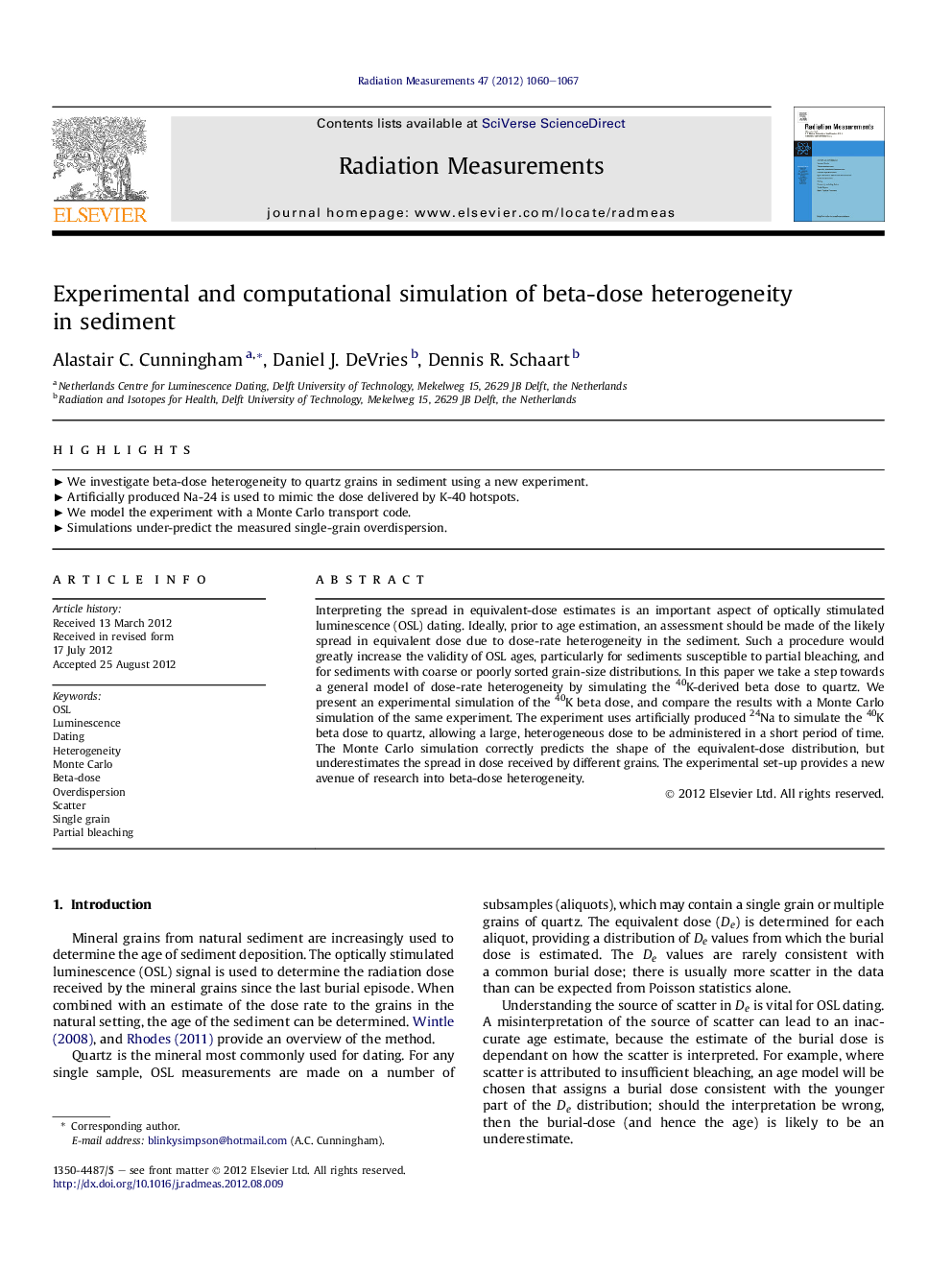| کد مقاله | کد نشریه | سال انتشار | مقاله انگلیسی | نسخه تمام متن |
|---|---|---|---|---|
| 1883916 | 1533441 | 2012 | 8 صفحه PDF | دانلود رایگان |

Interpreting the spread in equivalent-dose estimates is an important aspect of optically stimulated luminescence (OSL) dating. Ideally, prior to age estimation, an assessment should be made of the likely spread in equivalent dose due to dose-rate heterogeneity in the sediment. Such a procedure would greatly increase the validity of OSL ages, particularly for sediments susceptible to partial bleaching, and for sediments with coarse or poorly sorted grain-size distributions. In this paper we take a step towards a general model of dose-rate heterogeneity by simulating the 40K-derived beta dose to quartz. We present an experimental simulation of the 40K beta dose, and compare the results with a Monte Carlo simulation of the same experiment. The experiment uses artificially produced 24Na to simulate the 40K beta dose to quartz, allowing a large, heterogeneous dose to be administered in a short period of time. The Monte Carlo simulation correctly predicts the shape of the equivalent-dose distribution, but underestimates the spread in dose received by different grains. The experimental set-up provides a new avenue of research into beta-dose heterogeneity.
► We investigate beta-dose heterogeneity to quartz grains in sediment using a new experiment.
► Artificially produced Na-24 is used to mimic the dose delivered by K-40 hotspots.
► We model the experiment with a Monte Carlo transport code.
► Simulations under-predict the measured single-grain overdispersion.
Journal: Radiation Measurements - Volume 47, Issues 11–12, November–December 2012, Pages 1060–1067